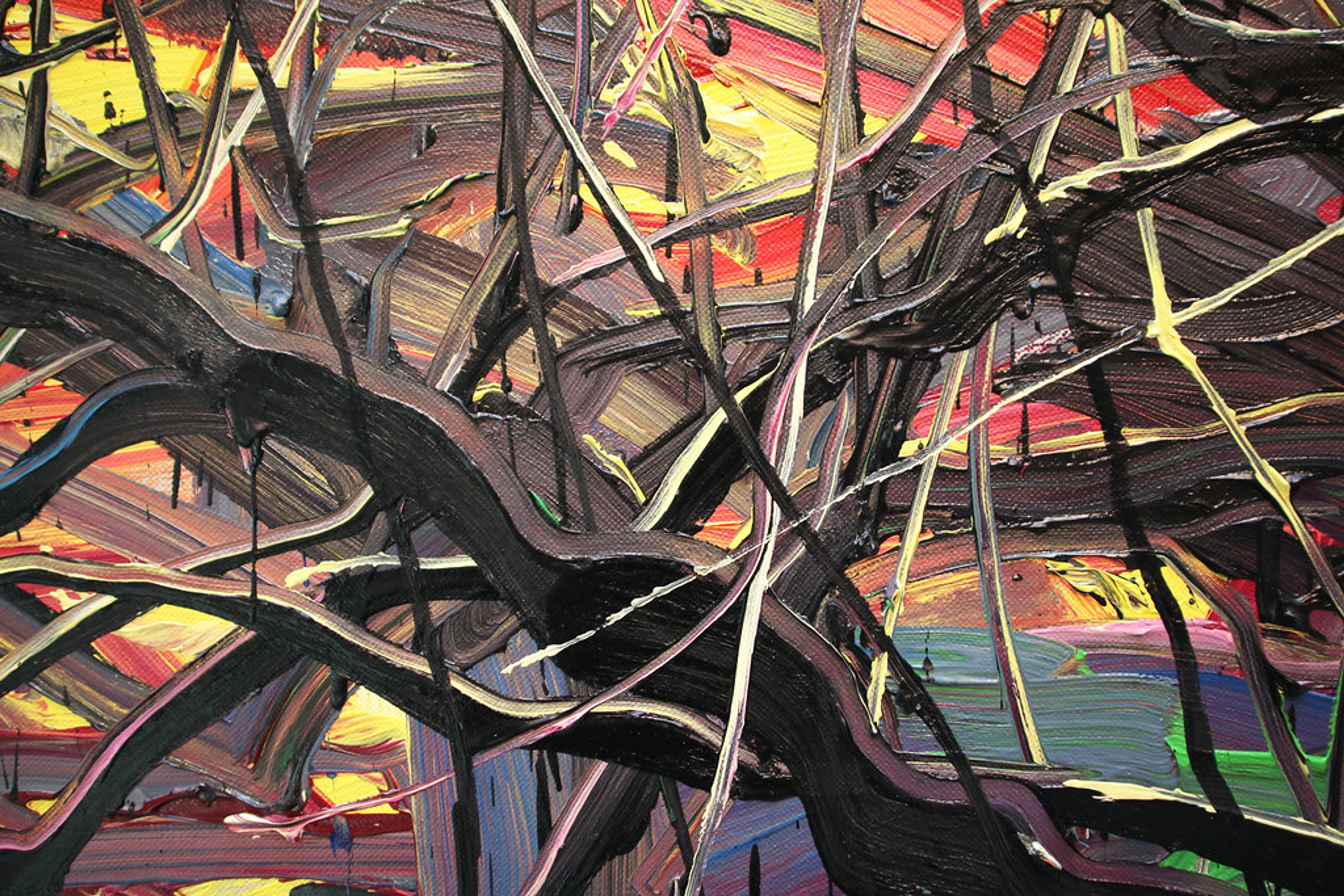
Art in Interior Design: A Curator's Journey Through Eras & Styles
Explore the grand evolution of art in interior design, from ancient sacred spaces to contemporary homes. A curator's personal deep dive into historical shifts, diverse mediums, and the profound impact of art on home aesthetics and well-being. Includes practical curation tips & FAQs.
The Grand Tapestry: Art's Enduring Evolution in Interior Design
I've always been fascinated by how our surroundings shape us, and perhaps even more so, how we shape our surroundings. It's a profound, often silent dialogue, isn't it? For me, a blank wall is like a quiet challenge, a space begging for a voice, a story. And for centuries, art has been that voice, sometimes a whisper, sometimes a booming declaration, transforming mere rooms into living, breathing narratives. Join me on a journey through time, a deeply personal one for me as both curator and artist, as we explore how art has woven itself into the very fabric of our homes, evolving from grand statements of power to serene, personal havens we cherish today. As a curator and artist, I find immense joy in tracing these threads, revealing how each era's art, from the monumental to the intimate, reflects and influences the soul of our living spaces. It's a journey not just through history, but through the evolving human desire to express, inspire, and find solace within the walls we call home.
The Earliest Strokes: Art as Sacred and Storyteller
Before we even had "interior design" as a concept, art was already a fundamental part of our sheltered spaces. Imagine stepping into a prehistoric cave, its walls adorned with vivid depictions of bison and deer. These weren't mere decorations; they were profound expressions, perhaps spiritual rituals or records of hunts, turning a cold, dark cavern into a vibrant canvas of survival and awe. Fast forward to ancient Egypt, and art became inextricably linked to the divine and the afterlife. Hieroglyphs and elaborate murals covered tomb chambers and temple walls, creating immersive narratives that guided the departed and honored the gods. These weren't just pretty pictures; they were portals, statements of belief, and powerful symbols of continuity.
Later, in the grand civilizations of Greece and Rome, frescoes and mosaics brought myths, landscapes, and daily life into villas and public baths, while sculptures of gods and heroes graced courtyards and atriums. I sometimes wonder what it must have felt like to live surrounded by these sacred stories and heroic figures – a constant reminder of humanity's place in the cosmos, or perhaps just a very elegant way to ensure your guests knew you were a person of refined culture, even if your actual daily life was a bit more mundane.
And who could forget the awe-inspiring stained glass of Gothic cathedrals or the intricate tapestries adorning medieval castles? Here, light itself became a medium, painting kaleidoscopic stories across stone floors, while woven narratives kept out the cold and reinforced family legacies. Art, in these early eras, wasn't separate from living; it was living, breathing, sacred, and entirely integrated into the very structure of society and its homes.
Where Walls Whispered Grandeur: Art as Architecture
What did art look like when it was the wall? Cast your mind back to the opulent palaces and sprawling estates of the Renaissance, Baroque, and Rococo periods. Here, art wasn't just on the wall; it was the wall, or at least inextricably linked to it. Think of the sprawling frescoes adorning ceilings that created celestial illusions, the monumental tapestries covering entire expanses that offered warmth and storytelling, and the elaborate portraits showcasing lineage and power. These weren't just decorative elements; they were statements of wealth, status, and refined taste, meticulously curated to impress and awe. I sometimes imagine what it must have felt like to walk into one of those rooms, perhaps a little intimidated, certainly awestruck by the sheer scale and richness. It makes my own attempts at choosing the right piece for my living room feel decidedly less stressful, although no less significant in my own humble opinion!
In these grand spaces, art was often commissioned for a specific room, a specific wall, sometimes even a specific purpose. It was integrated into the architectural design, blurring the lines between painting, sculpture, and the very structure of the building. Imagine elaborate trompe-l'œil ceilings – art that "deceives the eye" to create an illusion of depth – that extended the sky indoors, carved wooden paneling that dissolved into sculptural forms, or intricately patterned stucco work that enveloped entire rooms in a unified artistic vision. You couldn't just swap out a Rubens for a Rembrandt on a whim; the art was literally built in, creating an undeniable permanence, a testament to the artisan's skill and the patron's vision. This symbiotic relationship meant the interior design was the art, a complete, immersive experience where every surface contributed to a cohesive, often overwhelming, narrative of power and piety. Even the frames themselves were part of the spectacle, often elaborate, gilded, and carved to match the room's overarching grandeur, serving as an extension of the artwork rather than a mere border.
A Brushstroke of Change: Art for the Aspiring Home
How did art become something you could buy for your own home? As we moved into the 19th century, a fascinating societal shift occurred. With the rise of the middle class, a desire for beauty and cultural enrichment spread beyond the nobility. The concept of a "home" evolved into a personal sanctuary, rather than solely a status symbol. This is where I start to feel a kinship with the past, seeing people begin to choose art for themselves, for their personal enjoyment and intellectual stimulation, not just for display. It was a quiet rebellion, perhaps, against the rigid confines of aristocratic taste and the exclusive world of art academies and salons, which had historically dictated "good" art.
Technological advancements like printmaking and chromolithography made art more accessible and affordable. The advent of photography, for example, not only offered new artistic expression but also subtly shifted how people perceived and reproduced imagery, democratizing the visual experience even further and laying groundwork for personal curation. Smaller canvases, easier to transport and display, became popular. Galleries and public exhibitions emerged, democratizing the art market. The concept of Art for Art's Sake also gained traction, emphasizing art's intrinsic value beyond its narrative or moral function, further encouraging personal appreciation. The Impressionists, with their vibrant landscapes and scenes of everyday life, truly captured this new spirit. Suddenly, you didn't need a sprawling fresco depicting ancient gods; a charming Monet of a woman with a parasol could bring light and life into a drawing-room. This was art that could be bought, hung, and even moved! What a revolutionary idea! It gave people a sense of agency, allowing them to curate their own environment in a way their ancestors couldn't fathom. Explore more about this pivotal period with our ultimate guide to Impressionism and delve into the master's work with our ultimate guide to Claude Monet.
![]()
https://www.rawpixel.com/image/547292, https://creativecommons.org/publicdomain/zero/1.0/
Building on this newfound freedom and the decorative impulses that Impressionism began to loosen, movements like Art Nouveau further blurred the lines between fine art and decorative art, integrating organic forms and intricate patterns into furniture, textiles, and architectural details. Think of Louis Comfort Tiffany's luminous stained glass lamps and windows, Héctor Guimard's iconic Parisian Métro entrances with their whiplash curves, or the elegant, flowing lines of an Alphonse Mucha poster. The entire interior became a unified work of art, a sinuous embrace of nature's beauty where everyday objects were imbued with artistic grace. It was a delightful rejection of industrial rigidity, insisting that beauty should permeate every corner of life.
The Abstract Revolution: Art Redefines the Interior
And then, oh boy, did things get interesting! The 20th century saw the world changing at a dizzying pace, and art reflected that tumultuous energy. The global upheavals of two World Wars also played a profound, if sometimes subtle, role. Post-war austerity, for instance, often led to a desire for cleaner, more functional aesthetics, rejecting the ornate styles of the past in favor of modernism and integrating art that was less ornate and more conceptually driven. From Fauvism's explosive colors to Cubism's fractured perspectives, artists like Henri Matisse and Picasso began to challenge the very definition of art itself. And with it, the role of art in our homes transformed once more. Learn more about these radical shifts with our ultimate guide to Fauvism and the ultimate guide to Cubism.
New movements like Surrealism, with its dreamlike juxtapositions and exploration of the subconscious, and later Pop Art, which brought consumer culture and bold, graphic imagery into the art world, also found their way into interiors, offering unexpected narratives and vibrant statements. Even earlier, movements like Futurism celebrated speed and dynamism, influencing sleek, modern furniture, while the anti-establishment spirit of Dadaism challenged conventional aesthetics, laying groundwork for conceptual art that could radically alter interior perceptions. The birth of abstract art and movements like Expressionism, De Stijl (think Mondrian), and Bauhaus brought a new philosophy: art and design should be functional, clean, and integrated. Gone were the ornate frames and busy patterns. Instead, art became about pure form, color, and line, often harmonizing with the burgeoning minimalist aesthetics of modern architecture. I often think about how brave those early abstract artists were, stripping away the recognizable and asking us to find beauty in pure form. It’s a challenge I embrace in my own work every day.
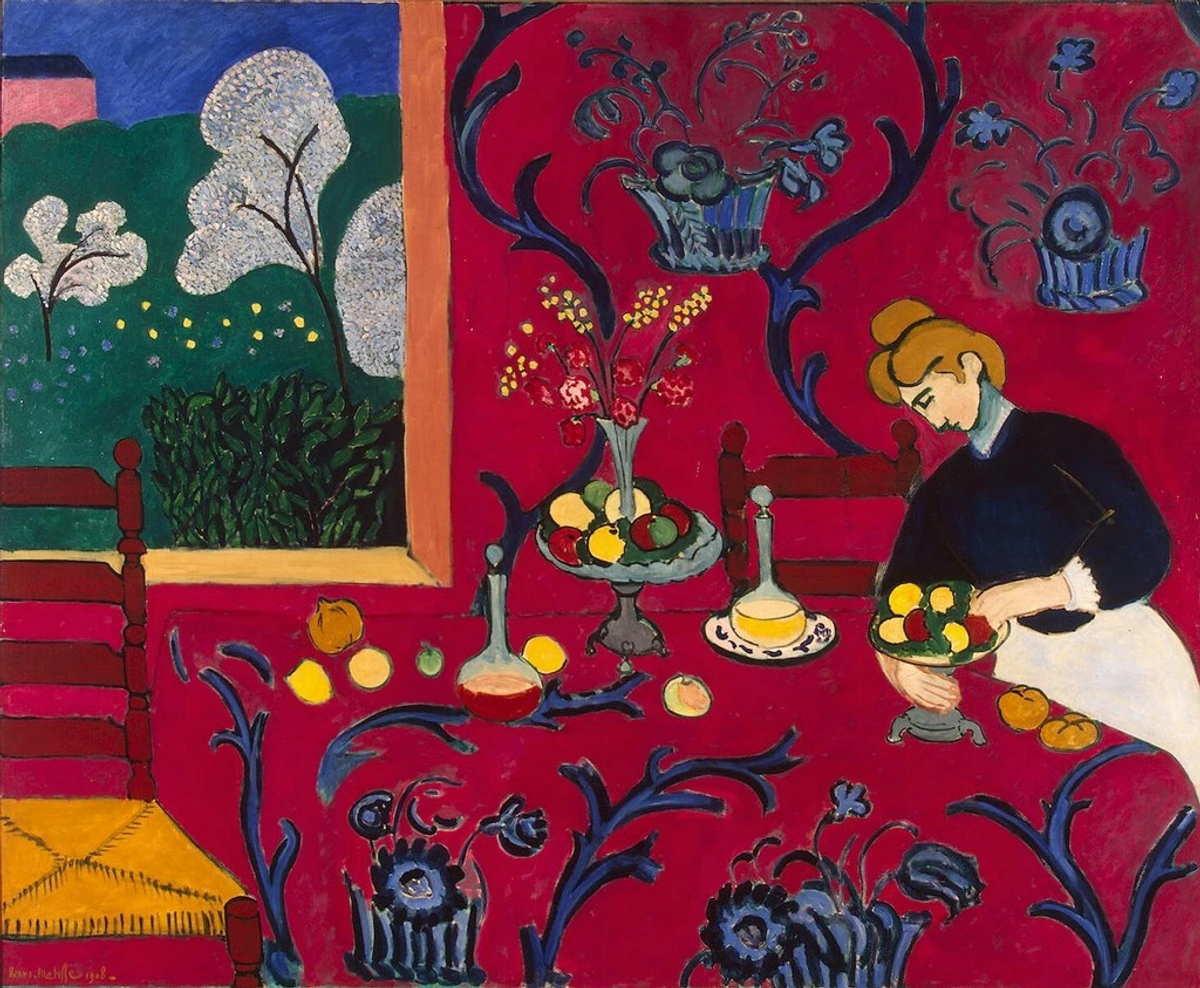
https://live.staticflickr.com/4073/4811188791_e528d37dae_b.jpg, https://creativecommons.org/licenses/by-sa/2.0/
Early abstract pioneers like Wassily Kandinsky explored the emotional language of non-representational forms, paving the way for a deeply personal connection to art that transcended literal depiction. His bold compositions were a radical departure, inviting viewers to engage with art on an intuitive, sensory level, fostering what would become a hallmark of Abstract Expressionism.
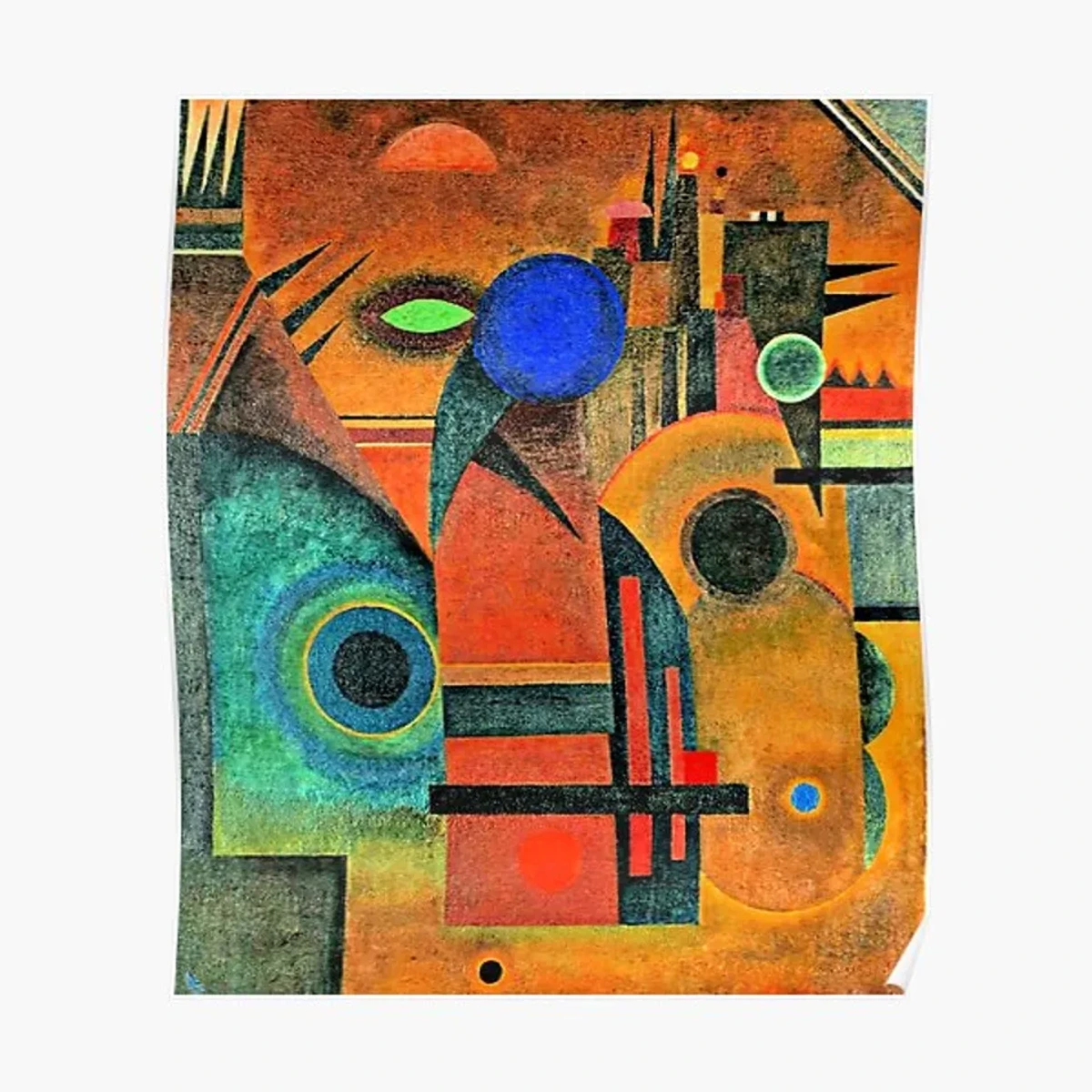
Printerval.com, https://creativecommons.org/licenses/by-nc/4.0/
Minimalism: Less is Truly More
This period saw the definitive rise of minimalism, not just as an art style, but as a lifestyle and interior design philosophy. The idea was to pare down to essentials, creating serene, uncluttered spaces. In such an environment, art became a powerful focal point, a carefully chosen element that spoke volumes without overwhelming. Think of Piet Mondrian’s iconic grids. Each line, each block of color, is intentional, creating balance and harmony – a perfect match for minimalist principles. It's a deliberate choice to remove the superfluous, leaving only what is essential, allowing the art to hold an undeniable presence. Discover more about this enduring aesthetic with our ultimate guide to minimalism and how it influences art for minimalist interiors.
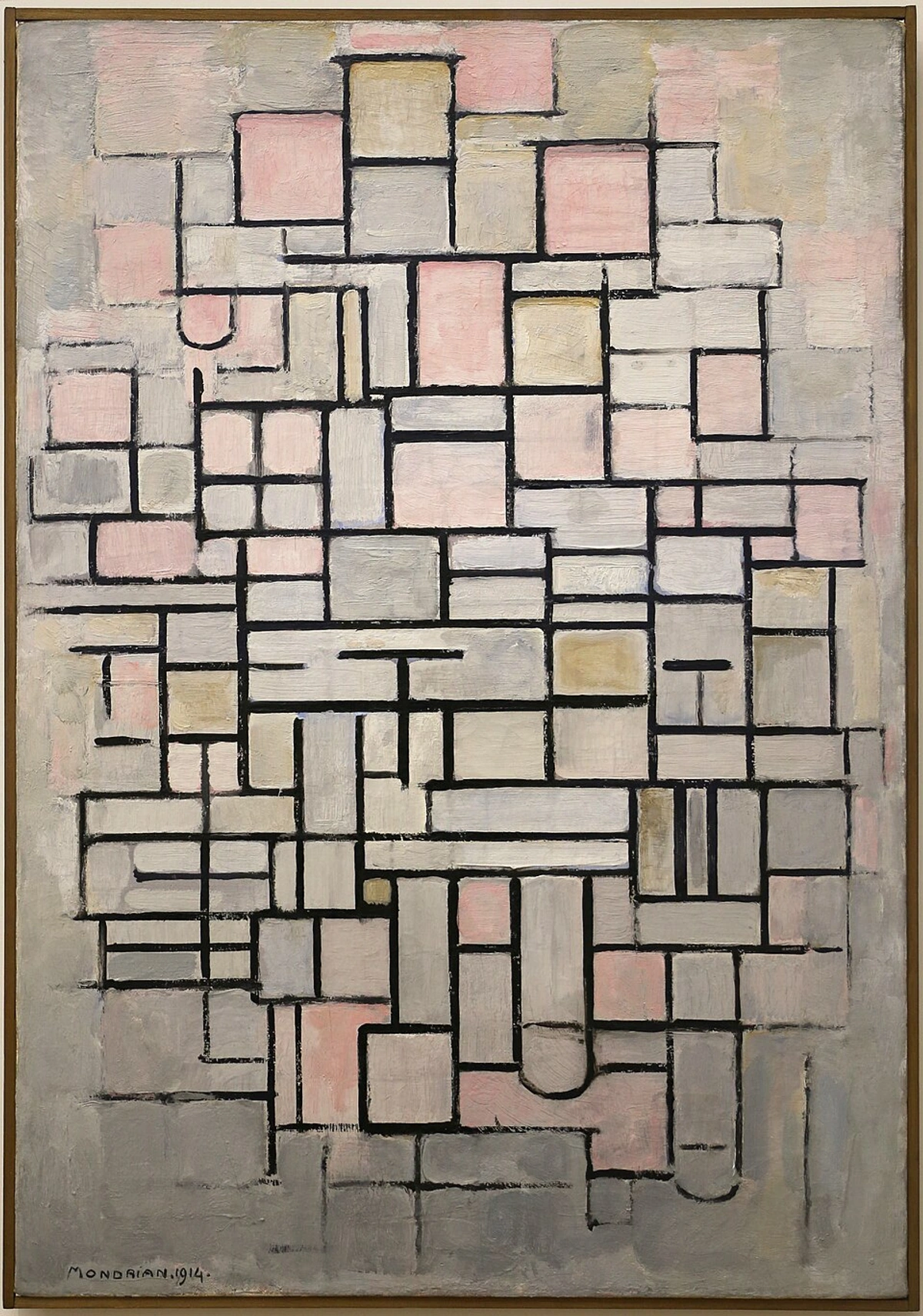
https://commons.wikimedia.org/wiki/File:Piet_mondrian,_composizione_n._IV-composizione_n._6,_1914,_01.jpg, https://creativecommons.org/licenses/by/3.0
For me, the bold statements of artists like Christopher Wool, with their stark, often text-based or abstract compositions, perfectly embody this ethos. His work often strips back complexity, presenting raw, visceral forms that demand attention within a minimalist setting. It’s a powerful conversation between the art and the silence around it.
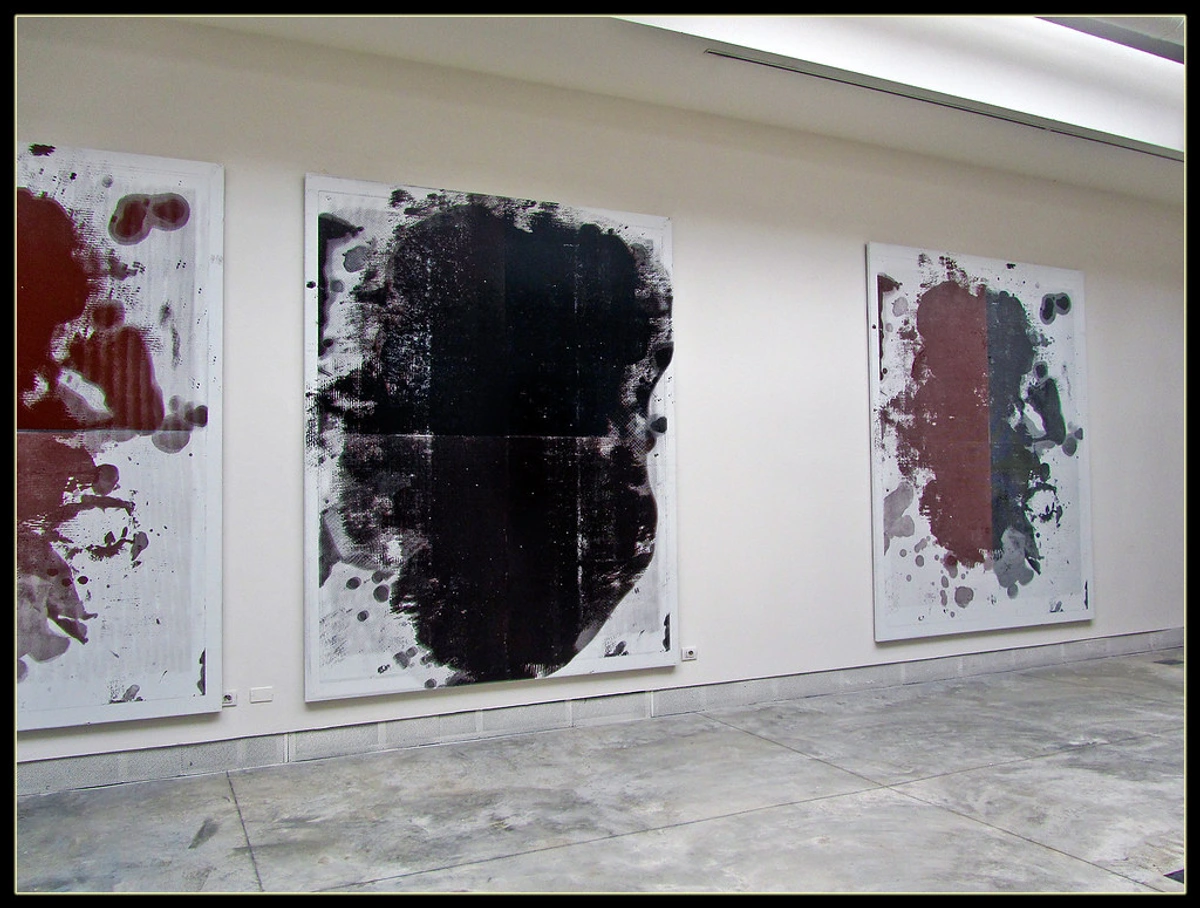
https://live.staticflickr.com/6195/6087778411_164f0d9a2f_b.jpg, https://creativecommons.org/licenses/by-nc-nd/2.0/
Art Across Mediums: Beyond the Canvas
While paintings often take center stage in discussions of art and interiors, the evolution of other mediums has played an equally vital role in shaping our living spaces. From ancient sculptures to modern digital installations, each medium offers unique possibilities for expression and interaction, defining a room's character in distinct ways. It’s a delightful challenge, isn't it, to think beyond the frame and consider all the ways art can inhabit a space?
- Sculpture: Moving from classical busts and religious figures to abstract forms by artists like Henry Moore or Barbara Hepworth, sculpture anchors a space, adding three-dimensional interest and a sense of gravity, movement, or fluidity. Modern abstract sculptures can interact dynamically with light and shadow, creating ever-changing visual experiences that invite contemplation from every angle.
- Photography: The advent of photography democratized visual art further, offering accessible and often documentary or conceptual pieces that serve as windows to other realities or explorations of form. From expansive landscape prints that broaden horizons to intimate abstract photographic compositions that invite closer inspection, it provides a contemporary lens through which to view the world, often at a more accessible price point.
- Printmaking: From woodcuts to lithographs, printmaking has historically been a powerful democratizer of art, making visual narratives and aesthetic forms accessible to a wider audience. In interiors, prints offer a versatile, often more affordable, way to introduce artistic statements, allowing for rotation and diverse thematic groupings, perfect for evolving tastes.
- Textiles: Beyond the grand tapestries of the past, modern textile art, including woven hangings, quilted pieces, and even intricately patterned rugs, offers warmth, rich texture, and often a handmade, soulful touch to an interior. Contemporary fiber artists are pushing boundaries, creating large-scale sculptural pieces that soften angular lines or inject vibrant color and pattern, bringing a tactile dimension to art.
- Ceramics and Decorative Arts: From intricately painted vases to avant-garde pottery, these functional yet artistic objects have always bridged the gap between utility and beauty. Placed on shelves, tables, or pedestals, they add character, a human touch, and often a burst of color or intriguing form. Contemporary ceramicists often create standalone sculptural pieces that defy traditional functionality, acting purely as art.
- Digital and Mixed Media: In today's digital age, art can manifest as dynamic video installations, subtly changing projected imagery, or mixed media compositions that incorporate diverse materials and technologies. These push the boundaries of what can adorn a wall or fill a space, offering immersive or interactive experiences, or even subtle ambient visual statements that respond to the environment.
Each medium carries its own narrative and aesthetic weight, allowing for boundless creativity in interior curation. It’s a constant reminder that art doesn't have to be confined to a rectangle on a wall; it can flow, glow, and unfold in unexpected ways.

https://www.flickr.com/photos/abstract-art-fons/30634352376, https://creativecommons.org/licenses/by/2.0/
Contemporary Interiors: Art as Personal Dialogue
Fast forward to today, and we find ourselves in an era where interior design is deeply personal, often a reflection of our journeys, passions, and even our quirks. The grand salons might be gone, but the desire for beautiful, meaningful spaces remains as strong as ever.
Today's approach is less about adhering to rigid styles and more about curation and personal expression. We mix antique finds with modern pieces, vibrant colors with subdued tones, and crucially, we choose art that speaks to us. Whether it’s a bold piece of street art-influenced work like Jean-Michel Basquiat's powerful canvases (if only I had a Basquiat!), or the socially charged stencils of a Banksy, or the iconic graphic imagery of a Shepard Fairey, the key is resonance. The rise of online art platforms and digital marketplaces has also dramatically democratized access, allowing anyone, anywhere, to discover and acquire unique pieces that resonate with their individual taste. This is where abstract art truly shines – it allows for deep emotional connection without dictating a specific narrative, adapting seamlessly to various interior styles. Contemporary artists like Gerhard Richter or Zeng Fanzhi continue to push boundaries, offering works that challenge perception and evoke powerful, often raw, emotion.
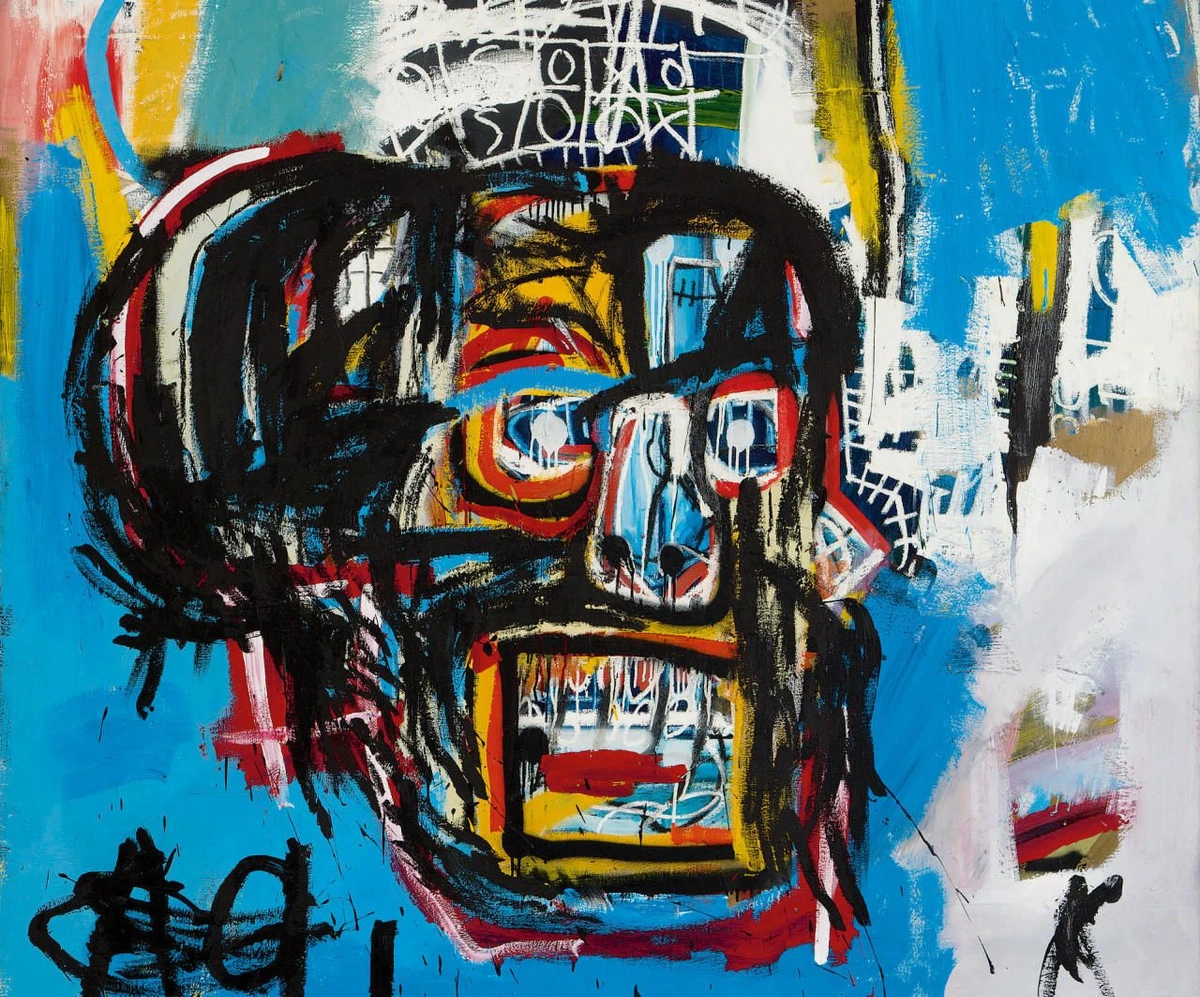
https://heute-at-prod-images.imgix.net/2021/07/23/25b32e7b-0659-4b35-adfe-8895b41a5f89.jpeg?auto=format, https://creativecommons.org/licenses/by/4.0/
The contemporary interior embraces a fluid and eclectic approach, often valuing the story behind a piece as much as its aesthetic. Sustainable art practices, such as supporting local artists, utilizing recycled materials, or choosing ethically sourced works, are also gaining prominence, reflecting a broader societal consciousness. This approach encourages mindful consumption and a deeper connection to the art's origins, creating spaces that are not only beautiful but also ethically sound.
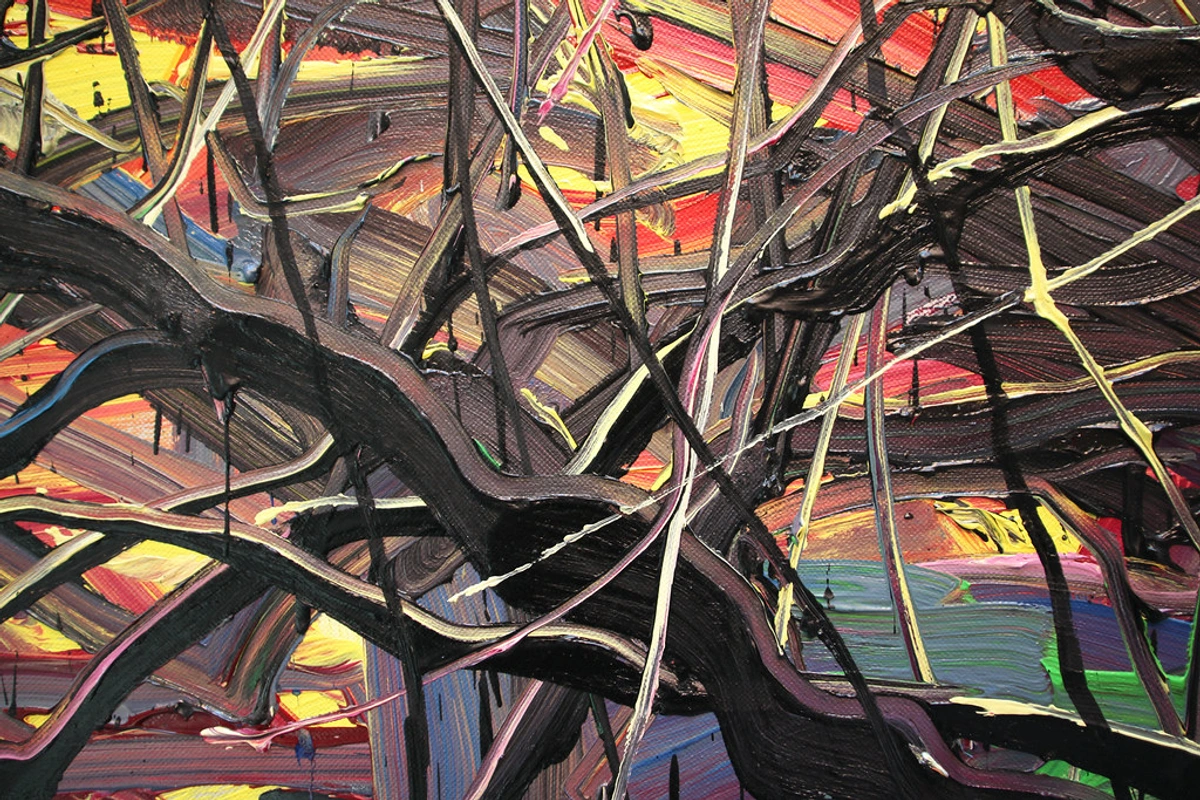
https://live.staticflickr.com/2875/8866942510_439379d853_b.jpg, https://creativecommons.org/licenses/by/2.0/
Art, Atmosphere, and the Human Soul: A Deeper Connection
Beyond aesthetics, art holds a profound, often subtle, power to influence our mood, productivity, and overall sense of well-being within a space. It’s not just about what looks good; it’s about how a piece feels to live with. For me, my studio isn't just where I work; it's a mental landscape, constantly shifting with the colors and forms that surround me. This idea extends to any home: art can transform a mere room into a sanctuary, a vibrant hub, or a peaceful retreat.
Consider the psychology of color: a bold red might energize a creative space or dining room, while calming blues and greens can foster tranquility in a bedroom or reading nook. Abstract art, particularly, excels at this, as its non-representational nature allows for a more direct, emotional, and intuitive response, bypassing literal interpretation. The carefully chosen artwork can reduce stress, inspire creativity, or simply provide a focal point for mindful reflection, contributing significantly to the atmosphere and, ultimately, the soul of the home. It’s a silent, daily therapy, if you let it be.
My Personal Canvas: Art as a Soulful Anchor
For me, art has always been more than just something pretty to look at. It's an anchor, a visual diary of emotions and ideas. When I create a piece, I'm not thinking about matching a sofa (though it's a bonus if it does!). I'm exploring the emotional language of color or grappling with a feeling, pouring a part of my artistic journey onto the canvas. The magic often lies not just in the subject, but in the elemental language of color and composition. Color can evoke powerful emotions – a vibrant red energizes, a deep blue soothes, a soft yellow invites warmth. Similarly, composition – the arrangement of lines, shapes, and forms – dictates the visual flow and balance of a piece. A dynamic, asymmetrical composition might inject energy, while a balanced, symmetrical one creates calm.
As I create, I'm constantly considering how these elements will translate from my canvas to a home, how they will quietly converse with the light, the furniture, and ultimately, the soul of the person living there. And when someone chooses my art for sale for their home, they're not just buying a print; they're inviting a piece of that journey, that emotion, into their own space. This is particularly true in minimalist settings, where every object has a heightened presence. In a clutter-free environment, a single, impactful piece of original abstract art can truly define a room, offering a focal point for reflection and calm. It’s why I often find myself advising people to choose art that deeply resonates with them, rather than following fleeting trends. After all, you're going to live with it every day, so it better make you feel good! It’s about choosing abstract art that resonates, not just filling a void.
Curating Your Own Story: A Guide for Modern Interiors
So, how do you navigate this vast landscape of art and design to create a space that feels uniquely you? It's less about rigid rules and more about intuition, but I've picked up a few pointers on how to decorate a house and generally decorating your home over the years.
- Start with Emotion: Before you even think about color palettes or frame styles, ask yourself: "How do I want this room to feel?" Calm? Energetic? Playful? Your art should amplify that feeling, acting as an emotional anchor.
- Consider Scale and Space: A grand salon could handle a massive tapestry, but your cozy apartment might prefer abstract art for small spaces. Think about the wall, the room, and how the art will breathe within it. Sometimes, one large piece is more impactful than many small ones. (A topic I often ponder when curating your space). For more detailed guidance on sizing, check our FAQ below.
- Mix & Match (Thoughtfully): Don't be afraid to combine different styles or periods, but ensure there's a cohesive thread – perhaps a shared color, a consistent mood, or a recurring theme. It makes for a richer, more personal story, reflecting your unique journey.
- Lighting is Key: Art needs light to truly shine! Consider natural light, but also how artificial lighting can enhance or subdue a piece, changing its mood throughout the day. Gallery lighting can transform a space, revealing textures and colors in new ways.
- Embrace the Journey: Building an art collection, even if it's just for your own home, is a journey. Take your time, explore, and let your taste evolve. I recall once buying a vibrant abstract piece online, convinced it was the one for a particular nook. When it arrived, it was stunning, but the energy was all wrong for that quiet corner – a bit like trying to fit a symphony into a teacup. It ended up finding its perfect, more dynamic home elsewhere in the house, a valuable lesson in listening to a piece's innate personality rather than forcing it into a preconceived slot. You wouldn't expect a perfect meal to appear instantly, would you? The same goes for creating a soulful space. If you're looking for guidance, my articles on collecting abstract art might help.
- Consider the Room's Function: The art you choose for a vibrant living area might differ from the serene pieces you select for a bedroom. Let the purpose of the space guide your aesthetic choices, creating harmony and reinforcing the desired mood. A dynamic piece might inspire a home office, while a calming abstract could define a reading nook.
- Don't Forget Framing: Framing isn't just for protection; it's an extension of the art itself and impacts how a piece interacts with its surroundings. A minimalist frame can enhance modern art, while an ornate frame can add an unexpected contrast or bring traditional elegance. The material, color, and texture of the frame should complement both the artwork and the room's overall style, acting as a visual bridge, much like the changing frames throughout history mirrored evolving artistic tastes. Think sleek metal for modern, warm wood for organic, or elegant acrylic for a contemporary float.
- The Story Behind the Art: For many, the connection to a piece is deepened by its origin. Consider supporting local artists, understanding the creative process, or choosing works that have a narrative that resonates with you. This adds a layer of depth and personal history to your home.
- Accessible Art & DIY: Art doesn't have to break the bank or come from a prestigious gallery. Explore local art markets, student shows, or online platforms for emerging artists. Consider high-quality prints, limited editions, or smaller original works. Focus on pieces that resonate with you personally, rather than chasing trends or perceived investment value. Over time, your collection will grow organically, reflecting your unique taste and journey.
Whether you're exploring how to decorate a wall or undertaking a complete home makeover, remember that art is a powerful tool for self-expression and an anchor for your personal story.
Frequently Asked Questions About Art in Interior Design
Q: Should my art match my furniture?
A: While some coordination can be pleasing, "matching" is often less important than "harmonizing." Art doesn't need to blend in completely; sometimes a contrasting piece creates a dynamic focal point. The most important thing is that the art speaks to you and enhances the room's overall feeling.
Q: How high should I hang my art?
A: A common guideline is to hang the center of the artwork at eye level, which is typically around 57-60 inches (145-152 cm) from the floor. However, this can vary based on ceiling height, furniture placement, and the size of the piece. When hanging art above a sofa or console, ensure there isn't too much empty space between the furniture and the artwork; aim for about 6-8 inches (15-20 cm).
Q: Can abstract art work in traditional homes?
A: Absolutely! The juxtaposition of modern abstract art with traditional furnishings can create a wonderfully eclectic and sophisticated look. It adds an unexpected layer of interest and personality, bridging different eras. It's one of my favorite stylistic "surprises." To delve deeper, explore the history of abstract art and how to begin decoding abstract art.
Q: Is art an investment or just decoration?
A: It can certainly be both, but its primary value is often personal. While some art appreciates in monetary value, the true investment is in how it enriches your daily life, brings joy, and reflects your personality. Think of it as investing in your well-being and the soul of your home, a profound emotional investment that pays dividends daily. A financial return is a bonus, but the profound personal connection is the real treasure.
Q: How does the function of a room influence art choice?
A: The function of a room greatly influences the ideal art choice. For a bedroom, you might opt for calming, serene pieces that promote relaxation. In a vibrant living room, you could select more dynamic or conversational art that sparks discussion. For a home office, inspiring or thought-provoking pieces might be more suitable. Always consider the mood you wish to cultivate in each unique space. For further guidance, refer to point 6 in our "Curating Your Own Story" section.
Q: How does framing impact artwork and a room's aesthetic?
A: Framing is far more than just a protective border; it's an integral design element. A frame can enhance the artwork, define its boundaries, and help it integrate or stand out within a room. A simple, modern frame might create a sleek look, while an ornate, traditional frame can add a sense of history or luxury. The material, color, and texture of the frame should complement both the artwork and the room's overall style, acting as a visual bridge. See point 7 in "Curating Your Own Story" for more details.
Q: How do I ensure the art is the right size for my space?
A: Scale and proportion are crucial. A common mistake is hanging art that's too small for a large wall, making it feel lost. Conversely, an overly large piece can overwhelm a small room. As a general rule, a piece of art (or a gallery wall grouping) should take up about two-thirds to three-quarters of the wall space that is not covered by furniture. If hanging above furniture, the art should be at least two-thirds the width of the furniture and hung so that there are about 6-8 inches (15-20 cm) between the bottom of the frame and the top of the furniture.
Q: What about art in outdoor or transitional spaces?
A: Integrating art into outdoor or transitional spaces like patios, sunrooms, or even garden areas is a wonderful way to extend your personal aesthetic beyond interior walls. For these areas, consider durable materials that can withstand elements, such as weather-resistant sculptures, ceramic pieces, or framed prints behind UV-protected glass. The art can serve as a focal point, complement natural surroundings, or create a seamless visual flow between indoors and out, transforming these zones into extensions of your living space.
Q: How can I start building an art collection on a budget?
A: Building an art collection doesn't require vast wealth. Start by exploring local art markets, student shows, or online platforms for emerging artists. Consider high-quality prints, limited editions, or smaller original works. Focus on pieces that resonate with you personally, rather than chasing trends or perceived investment value. Over time, your collection will grow organically, reflecting your unique taste and journey.
Q: Can I display my own art in my home?
A: Absolutely! Displaying your own creations is one of the most personal ways to curate your space. It adds an unparalleled layer of authenticity and story, transforming your home into a true reflection of your inner world and creative spirit. Don't underestimate the power of showing your own work; it makes your home uniquely yours.
A Final Thought: Your Home, Your Masterpiece
From the ancient cave dwellings and frescoed halls of palaces to the thoughtfully curated spaces of today, the journey of art in interior design is a testament to our enduring human need for beauty, expression, and connection. It's a dialogue between history and the present, between grand statements and quiet personal moments, a continuous unfolding narrative that spans millennia. Each era has offered new ways for art to define, elevate, and personalize our surroundings, reflecting the spirit of its time and the evolving human experience. In the end, it's about making your space authentically yours, a place where every glance brings a moment of joy, reflection, or wonder, nourishing your soul daily.
So, as you look around your own home, remember that you are the curator of your personal gallery. Each piece of art you choose, whether it's a grand painting or a small print, contributes to the masterpiece that is your living space, a reflection of your soul and journey. And if you ever find yourself near my museum in 's-Hertogenbosch, NL, please do stop by and see how my artistic vision continues to unfold. Happy decorating, and may your walls always tell a beautiful story.




